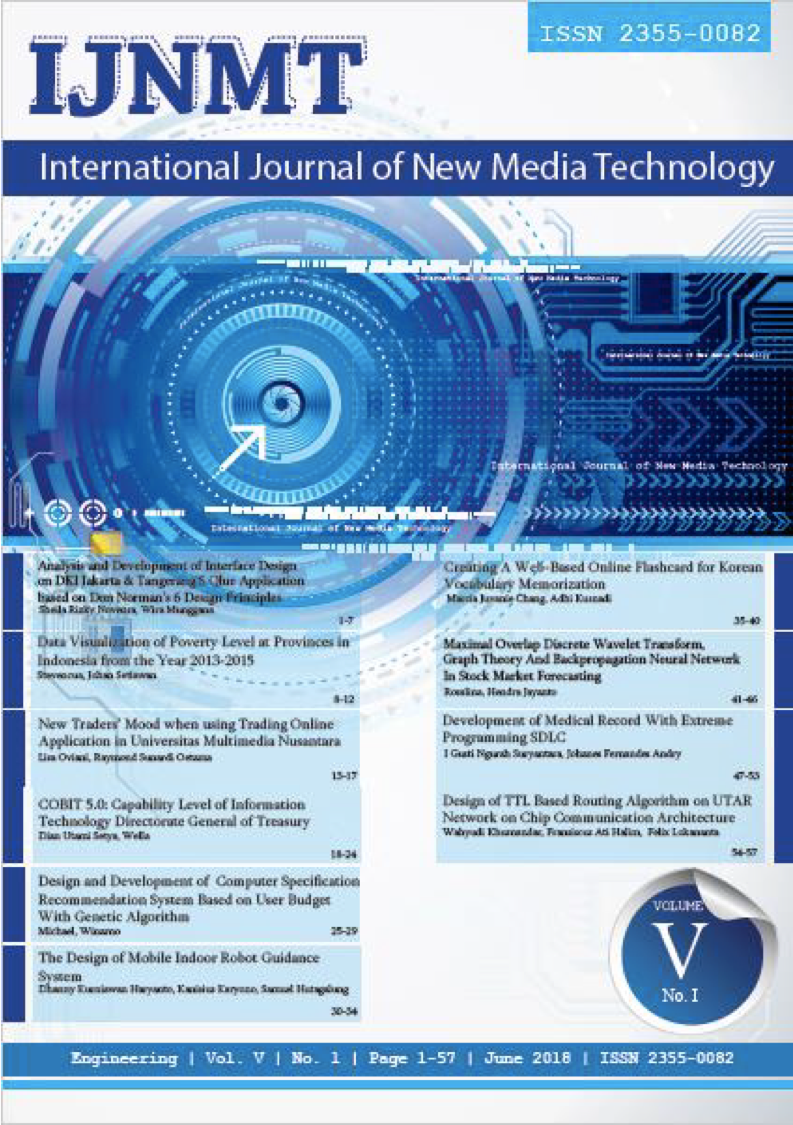COBIT 5.0: Capability Level of Information Technology Directorate General of Treasury
DOI:
https://doi.org/10.31937/ijnmt.v5i1.614Abstract
Information system is one of the most important things that can help every companies to improve the performance of their company. The Directorate Generate of the Treasury is one of the government agencies that already use information systems to support their performance to handle the entire transaction of state budgeting and also they provides information systems to serve their users. That system must have a priority of the security and reliability. To ensure that the system has both of the priority, it is necessary to holding of the information systems auditing to ensure that capability level of their governance. The author doing the audit of information system using framework of COBIT 5.0 and doing measurements with Capability Level. EDM 01 (Ensure Governance Framework Setting and Maintenance) and EDM 02 (Ensure Benefits Delivery) are the two main processes of that government needs to do an audit, because they want to make sure that the system can running well and can deliver every benefits to their users. Based on the measurements that have been done using a capability level, both of the main processes are stalled on level 4 and could not reach the level of target on level 5 because there are some activities that cannot going well and can be inhibit the others process to reach their goals.
Index Terms” Capability Level, COBIT 5.0, Information Systems, Information Systems Auditing, IT Governance.
Downloads
Downloads
Published
How to Cite
Issue
Section
License
Authors retain copyright and grant the journal right of first publication with the work simultaneously licensed under a Creative Commons Attribution-ShareAlike International License (CC-BY-SA 4.0) that allows others to share the work with an acknowledgement of the work's authorship and initial publication in this journal.
Authors are able to enter into separate, additional contractual arrangements for the non-exclusive distribution of the journal's published version of the work (e.g., post it to an institutional repository or publish it in a book), with an acknowledgement of its initial publication in this journal.
Copyright without Restrictions
The journal allows the author(s) to hold the copyright without restrictions and will retain publishing rights without restrictions.
The submitted papers are assumed to contain no proprietary material unprotected by patent or patent application; responsibility for technical content and for protection of proprietary material rests solely with the author(s) and their organizations and is not the responsibility of the IJNMT or its Editorial Staff. The main (first/corresponding) author is responsible for ensuring that the article has been seen and approved by all the other authors. It is the responsibility of the author to obtain all necessary copyright release permissions for the use of any copyrighted materials in the manuscript prior to the submission.















